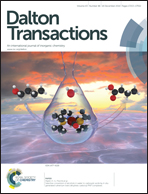Spontaneous resolution of polyoxometalate-based inorganic–organic hybrids driven by solvent and common ion†
Abstract
Three single-sided, triol-functionalized Anderson POM hybrids were successfully synthesized. With suitable solvents and the effect driven by common-ion synergy, enantiopure crystals were obtained when the spontaneous resolution of enantiomers occurred upon crystallization. The chirality of POM-organic hybrids was confirmed by single-crystal X-ray diffraction and solid-state CD spectrum. A reversible, spontaneous resolution process for POM-based inorganic–organic hybrids was observed in this work.


 Please wait while we load your content...
Please wait while we load your content...